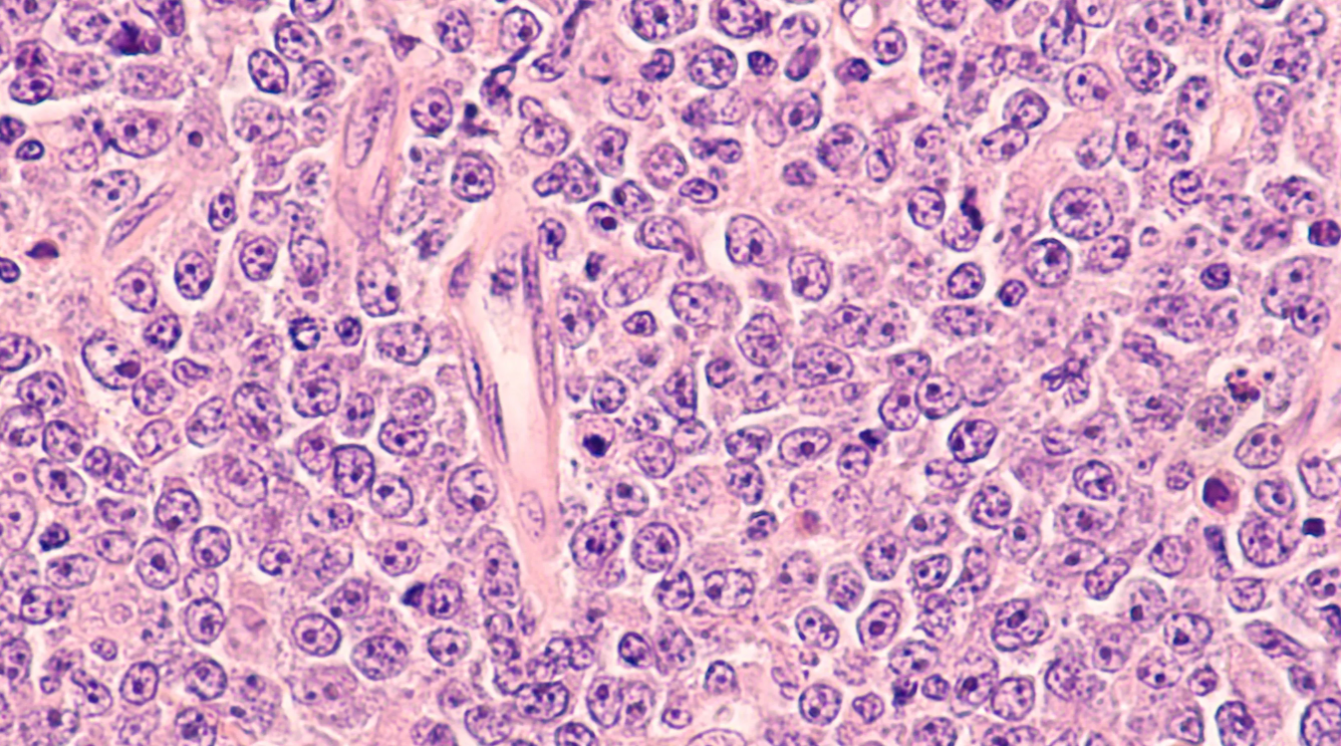News
Article
More than 80% of Patients with Diffuse Large B-cell Lymphoma Responded to Novel Therapeutic, according to the Results of a Preclinical Trial
Author(s):
This therapeutic could work for diseases of the B cell receptor signaling transduction pathway that do not respond well to single-agent BTK inhibitor.
Xiaolin Zhang, PhD, founder, chairman and CEO of biopharmaceutical company Dizal Pharmaceuticals (China) discussed new preclinical findings about DZD8586, a new drug candidate for diffuse large B-cell lymphoma (DLBCL), with Pharmacy Times at the 65th American Society of Hematology (ASH) Annual Meeting & Exposition, December 9-12, 2023, San Diego, California, to discuss. In this interview, Zhang provides a wealth of information about drug mechanism, positive endpoints, and the need pharmacists to be educated on safety and adverse events.
PT Staff: What is the mechanism of action for DZD8586?
Xiaolin Zhang, PhD: Now, we know BTK is an important enzyme involved in the B cell signaling transduction. Now, and especially in chronic lymphocytic leukemia (CLL), it has shown tremendous efficacy and has brought tremendous benefit to the patients. However, eventually, these patients will relapse and develop resistance to BTK inhibitors (about 50% of the patient). Whatever resistance to the current BTK inhibitor is due to a single mutation, C481s mutation. So once the patient developed that mutation, the BTK inhibitors cannot bind to the enzymes. but another 50%, paradoxically, significant decrease or kill the BTK enzymes. I mean, that tells us immediately, at least, that another 50% of patients have other pathways that are involved.
A patient with this type of mutation can no longer rely on the BTK pathway; so, not only is the BTK pathway is important, but the Lyn pathway is also important. So we designed a drug that is a dual inhibitor to not only inhibit BTK, the wild type and resistant (with mutation C481s), but it can also inhibit the Lyn pathway. So essentially, you can totally shut down B cell receptor signaling transduction pathways, which should bring additional benefit in diseases that rely on the B cell receptor signaling transduction pathway but do not respond well with a BTK single agent alone.
Image credit: David A Litman | stock.adobe.com

So we tested that in DLBCL [because patients with] diffuse large B [who are treated with] current BTK inhibitors get some activity, but it is not that great. It is important, but not as critical as, say, CLL overall response rate (ORR) probably in the 15% to 20% range. However, because we hit both, we expect we should bring much bigger clinical benefit. Indeed, that's what we observe in our trials admit it is early days for 8586. In our small subset of patients with DLBCL, we saw over 80% response rate (RR) which is very, very rare. And we believe we found a drug that can really set down the B cell receptor transduction pathways. That's why we such a dramatically high response rate in this disease.
PT Staff: What is the study design and what are patient outcomes in the preclinical trial evaluating DZD8586? What has been observed so far?
Xiaolin Zhang, PhD: So we have 2 studies: 1 is international and 1 is China only. We look at the patients who have B-cell lymphomas with all different subtypes [and] we see activities in different subtypes as well.
What we observed that a) in the cohort of [patients with] CLL, we have patients who relapsed from the current PD1 inhibitors [or have] C481s mutations (these are these patients who has this single resistance mutations). They responded very well to 8586 and are still going (over 8 months now). we've also recruited patients with other B-cell lymphoma subtypes, especially the DLBCL cohort. And in the subtype, you find the most dramatic response rate (83% response rate).
PT Staff: What treatment gaps do patients with B-cell NHL face? How could this new drug address these gaps?
Xiaolin Zhang, PhD: With the B-cell lymphomas, especially DLBCLs (for the last several years or decades or so) most of the significant progress has actually been with the biologics. [But] there are some issues with these biologics. First of all, of course, all the biologics they need to be intravenous (IV) injection or infusion.
They also come with (especially the antibody drug conjugates [ADCs]) related toxicities. CAR T has the potential to be curative for a subset of the patients, however… within the last week or 2, the FDA issued warning that some of the CAR Ts may causing T cell lymphomas.
But [DZD8586], being an oral agent [where we are] especially seeing activities (such a high activity) in the later lines brings huge advantage. You don't need to see a doctor; you don't need to have this biologic-infusion related complications. You go home take the pill once a day, [and] that is very much welcomed by the patients and the community.
PT Staff: What might pharmacy teams expect to do regarding adverse events and treatment management?
Xiaolin Zhang, PhD: So what we need to do, together with a pharmacist, is to make our pharmacists fully aware of the potential safety issues— what are the issues? How is the best way to manage them? [Can you] manage them at home? What are the symptoms you really need to see the doctors?
This is probably the number 1 thing. Second is to be careful with certain potential combination-related issues. We know that many of these patients at this stage are probably take multiple drugs to manage all kinds of different indications, [so it is important] to understand the potential drug-drug interaction-related issues. We need to educate our patients and doctors and pharmacists [on] the drug’s most appropriate use to help our patients.






